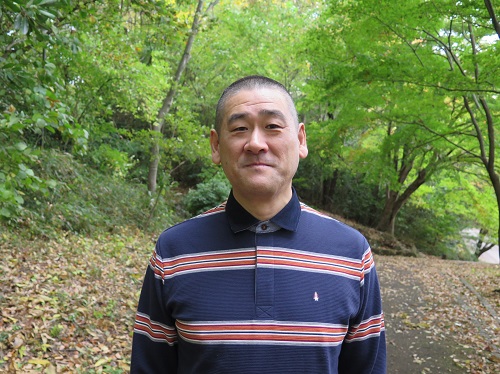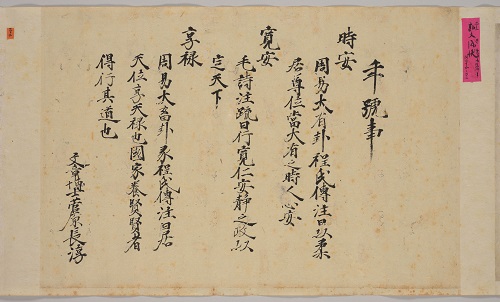Five things you should know about Japanese era names before the end of Heisei

Japan uses two calendar systems to count the number of years; the Gregorian calendar and the Japanese calendar. This year, 2018 is Heisei 30 according to the Japanese style. In May 2019, a new era name (nengō) is scheduled to be adopted under Japan’s calendar system, ushered in with the abdication of Emperor Akihito and the enthronement of Crown Prince Naruhito.
For a thousand years, Japanese era names have been derived from Chinese classics. One of the important meanings behind era name changes is marking a fresh start—a kind of “resetting” of the calendar. We don’t come across these kind of facts and traditions related to Japanese era names that often, so we asked Masaharu Mizukami, professor of Chuo University’s Faculty of Letters to share with us some basics of Japanese era names as we approach the end of the Heisei era.
What is a Japanese era name?
A Japanese era name is a title used for numbering years in the Japanese calendar system. In the same way that parents choose names for children as a way of expressing their hope for their healthy growth, in Japan, era names (nengō) are chosen to mark the passage of time. This tradition has been maintained for over 1,300 years.
Era names first came into use in China during the Han dynasty (202–220 BC) to assert and raise the profile of the ruler of the time. When the practice was introduced to Japan, people started to devise era names for their own country, separately from those of the current Chinese rulers.
Do era names have to be made of two kanji characters? Looking at recent era names like Heisei(平成), Shōwa(昭和), and Taishō(大正), the majority seem to consist of two kanji characters.
No, not necessarily. Some eras, like Tenpyō kanpō (天平感宝)or Tenpyō shōhō (天平勝宝)from the Tenpyō period (729–749) consist of four kanji characters, showing that there was no rule limiting the number of characters. But the two-kanji tradition is indeed of long standing.
Do era-name changes always coincide with the enthronement of a new emperor?
Yes, currently it does. From the Meiji period (1868–1912) onwards, it became the rule to change era names only when a new emperor acceded to the throne—a system that is called issei ichigen (“one reign, one era name”). This practice started in China during the Ming dynasty (1368–1644) and was later adopted by Japan.
Until and including the Edo period (1603–1867), however, eras were commonly changed for reasons other than imperial enthronements. For instance, it was not unusual to rename an era to drive away bad luck and to signal a fresh start after a sequence of natural disasters.
How are new era names decided?
Era names likely have been, and still are, decided by having several specialists propose new names and then holding discussions to narrow down the list of candidates. Not much information is available about how era names are decided today, so I’m not certain of the details, but that I believe is the general procedure
We do know that starting around the tenth century, new era names were decided by knowledgeable persons from several specific families that served the emperor’s court, who were known as monjō hakase. They were civil officials with specialized knowledge of the Chinese classics, similar to present-day university professors.
When deciding a new era name, each monjō hakase would submit a text called nengō kanmon, containing a candidate name and a passage of the Chinese classic on which the name was based. High-ranking officials of the court would then hold a discussion, called nanchin, to determine which name was most appropriate.
Precedent was important in these nanchin discussions. Some kanji characters would be ruled out because it was part of an era name during which unfortunate events occurred; other kanji would be avoided because of negative connotations of some sort. The candidate name remaining after the discussion would be reported to the emperor and be officially adopted.
The era name Heisei is said to have been derived from two Chinese classics, Shiki (Ch. Shiji; The Records of the Grand Historian) and Shokyō (Shujing; The Book of Documents), wishing for peace in Japan and overseas as well as in heaven and on earth. Have the Chinese classics always been cited for era names?
No. For instance, the Reiki(霊亀)era (715–717) was named after a good omen—the sighting of a rare turtle(亀). Another era name, Wadō(和銅)era (708–715) came from the discovery of copper (銅). When era names first came into use, they apparently were not rooted in the Chinese classics.
I believe that citing from Chinese classics became essential with the accumulation of more era name precedents and as the name-deciding procedures mentioned earlier became well established. China was far more advanced than Japan at that time and its writing system and literature carried great authority. Therefore, the fact that a certain era name was derived from a highly respected Chinese classic would verify that particular era name. That must have been the thinking that led to the naming of Japanese eras from Chinese classics.
Lately we sometimes see news reports speculating that the new era following Heisei might be named not only from Chinese classics but also from Japanese classics raising discussions about changing the tradition of era naming. While studying records of nanchin discussions from the Edo period recently, I actually discovered evidence where Nihon shoki (The Chronicle of Japan) is cited as evidence to justify an era name.
In this sense, rooting era names in Japanese classics is not something completely new and there is ample possibility that Japanese texts might be cited for the next era name. Considering the various changes that have taken place in era-naming procedures over the centuries, such as how it became the norm to rely on the Chinese classics or to change era names only when new emperors come to power, citing the Chinese classics may no longer be essential after Heisei.
We might witness a transitional moment—a turning point in the history of Japanese era names and their renewal procedures—if a text written in Japanese is actually cited for the new era name.

Photo: Nengō kanmon (former Hirohashi family collection, currently in the collection of the National Museum of
Japanese History, Muromachi Era [1333-1568], H-63-383-3)
This is a copy of a nengō kanmon dated the 20th day of the 8th month, Daiei 8 (1528).

Masaharu Mizukami / Professor, Faculty of Letters, Chuo University
Specializing in Chinese philosophy, Mizukami’s primary research interests are the study of historical documents and artifacts of the Qing dynasty in China. A native of Hokkaido, he graduated from the Faculty of Letters, Hokkaido University and went on to complete his master’s degree in the Graduate School of Letters, Hokkaido University. After completing the coursework for the doctoral degree, he became research assistant and then assistant professor in the Faculty of Letters, Hokkaido University. He also served as associate professor and professor in the Faculty of Education, University of the Ryukyus before assuming his current position in 2015.
Interviewer: Ayumi Koso
